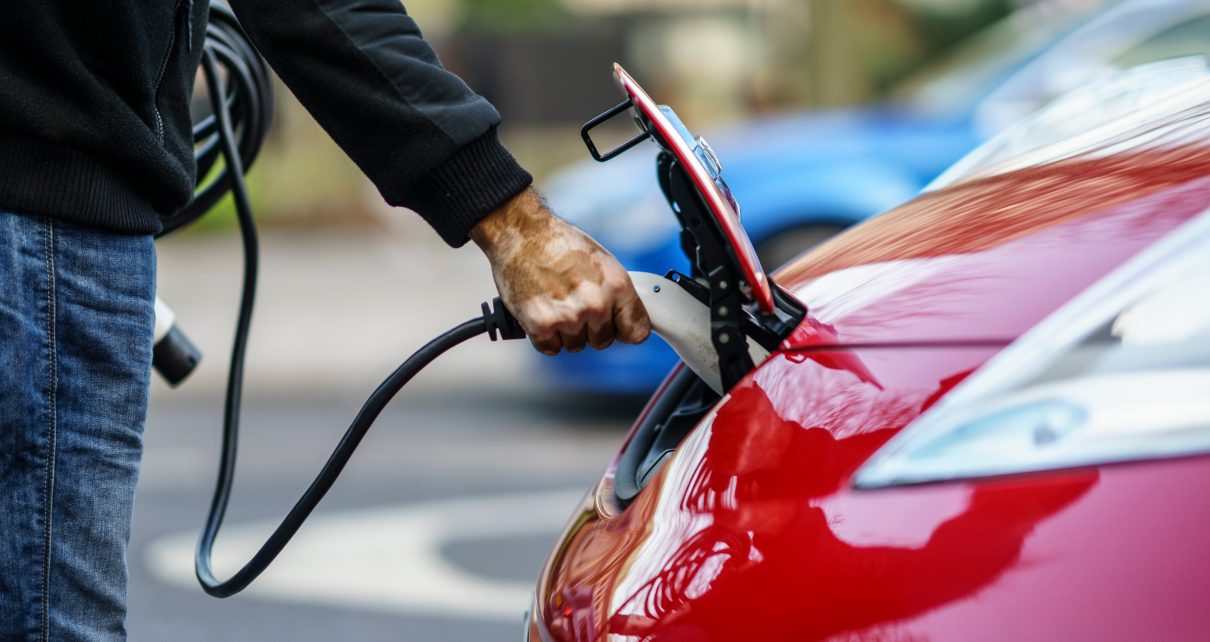When ride-hailing company Lyft Inc. announced last week that it would transition to 100% electric vehicles by 2030, observers cheered its ambitious commitment to curbing climate pollution.
But as analysts dig into the details, some are questioning whether the company can—and will—make good on its promise.
“It’s a noble commitment. But it needs to be backed by a plan and financial resources,” said Michelle Krebs, an analyst at Autotrader.
“It’s easy to throw out a goal. But you’ve gotta put something behind it to make it happen,” she added.
One worry is that while most Lyft drivers own their own vehicles, the company doesn’t plan to offer drivers financial support to switch to EVs, which have a higher upfront cost than the gasoline-powered status quo.
The average price of a new car in the United States in June 2019 was $36,600, while the average cost of an EV was $55,600, according to data from Cox Automotive Inc.
Over their lifetimes, however, EVs cost less than half as much to operate as gas-powered cars, according to a 2018 study from the University of Michigan’s Transportation Research Institute.
If Lyft offered drivers a financial incentive for going electric, it would go a long way toward lowering the initial cost barrier, said Sam Abuelsamid, an auto analyst with the consultancy Guidehouse LLP.
But Abuelsamid said he doesn’t expect the incentive to materialize anytime soon, given Lyft’s failure to turn a profit thus far.
“It would be great if they took a more active role in the shift to electrification. Realistically, though, when you look at the financials of these companies, none of these companies make money,” he said.
“If they had to give some sort of financial incentives to drivers to adopt EVs, that’s more of a hit on their bottom line,” he added.
Late last year, Lyft said it expected to become profitable by the fourth quarter of 2021. The company has not updated its forecast to account for the coronavirus pandemic, which has caused a decline in mobility across the board.
In a white paper detailing its commitment, Lyft wrote that the transition to EVs would be difficult and would depend on factors outside its control.
“This won’t be an easy task for us because, today, the vast majority of vehicles used on the Lyft platform are personal vehicles owned by people who drive rideshare in their spare time (less than 10 hours per week),” the company wrote.
“Encouraging millions of individuals to switch their personal vehicles from gas to electric in the next ten years will require unprecedented leadership from policymakers and regulators to align market rules and incentives for businesses and consumers alike,” it added.
In an email to E&E News, a Lyft spokeswoman similarly put the onus on policymakers to ensure that EV prices continue to fall in the coming years.
“If policymakers do their part in the next few years, EVs should reach cost-parity with gasoline vehicles by mid-decade,” wrote spokeswoman Darcy Yee.
Chasing charging
Another major concern centers on access to charging infrastructure.
Most Americans who own EVs charge them at home. But that’s an expensive proposition. Installation of a home charging station can cost $500 to $700, while labor and parts can cost $1,200 to $2,000, according to HomeAdvisor, a site for home repair services.
That type of investment may be out of reach for Lyft drivers, who earned an average of $8.50 an hour in 2018, according to research from the Massachusetts Institute of Technology.
Compounding the problem is that Lyft drivers are considered independent contractors rather than employees—meaning they don’t receive health care or paid time off.
Both Lyft and competitor Uber Technologies Inc. have vigorously lobbied against state and federal efforts to change that, said Abuelsamid, the auto analyst with Guidehouse.
“They have been very strident in their opposition to any kind of regulation that would require them to classify their drivers as employees,” he said. “They’ve lobbied very heavily, both at the state and local and national level, against any rule that would do that.”
Given the expense of home charging, Lyft should work to accelerate the build-out of more public chargers, Abuelsamid said.
In the white paper, Lyft wrote that it was committed to working with “third-party providers and utilities” to expand access to public charging, although it declined to offer much detail.
The current state of public chargers in America—even in EV hot spots like California—leaves something to be desired.
“In a lot of cities, getting easy access to a charger is extremely difficult,” Abuelsamid said. “Even if you go to San Jose, in the heart of Silicon Valley, where it seems like everyone is driving a Tesla, good luck finding a public charger in downtown San Jose. It’s actually a lot harder than you would think.”
Another case study is Washington, D.C., where the local government encouraged taxi drivers to switch to EVs in 2016. Two years into the initiative, 11 taxi drivers told E&E News that they could only access one public charging station in the entire city for a reasonable price (Climatewire, Jan. 3, 2019).
“I don’t know why they forced us to buy this car. It is very hard,” cab driver Mesfia Tesfaye previously told E&E News.
‘We don’t want you to be worse off’
Uber has taken a more cautious path toward electrification.
The company launched an “EV Champions Initiative” in 2018 that offered EV drivers cash incentives and new features in the app. But Uber since has discontinued the initiative, which existed as a pilot program in seven U.S. cities.
The company, however, is aiming to go all electric by 2025 in London, which has some of the strictest clean air regulations in the world.
In a previously unpublished interview with E&E News in February, Adam Gromis, Uber’s head of sustainability, offered a blunt assessment of the financial challenges that face drivers who go electric.
“We were able to offer some low-level incentives” for drivers who participated in the EV Champions program, Gromis said. “But the primary purpose of those incentives was not to try to get a bunch of drivers into electric. If anything, we were a little hesitant to go big on incentives. Research suggests that drivers are worse off economically with EVs.”
Gromis pointed to research from the International Council on Clean Transportation, which found that it will be more expensive for ride-hailing drivers to rely on EVs rather than gas-powered cars until 2023 if the drivers have access to home charging, and until 2025 if they’re entirely dependent on public charging.
“The best research on this is probably from ICCT, and they show that it won’t make sense for drivers to switch to electric until 2023 or 2025,” Gromis said.
“This is especially true when you take into account that drivers earn less money when they drive an EV,” he said. “They have to spend a lot more time figuring out where to charge their car and actually charging their car. And all that is time away from the potential for earnings.”
Asked about the decision to discontinue the EV Champions program, Gromis was blunt.
“With the EV Champions program, we were hesitant to go big,” he said. “We tried to be very clear with drivers that ’This is not intended to make you go out and buy an EV, because we don’t want you to be worse off.’”
Climate benefits
If Lyft proves the naysayers wrong and reaches its goal, the climate benefits could be enormous.
In the white paper, Lyft estimated that reaching 100% EVs by 2030 would reduce greenhouse gas emissions from its vehicle tailpipes by 16 million metric tons.
In a footnote, the company noted that’s more than the annual greenhouse gas emissions of 67 different countries.
In recent years, both Uber and Lyft have faced criticism for contributing to congestion and pollution in urban areas. But this perceived impact was difficult to quantify until February, when the Union of Concerned Scientists released the results of a comprehensive study on the companies’ emissions.
The study found that ride-hailing services are responsible for 69% more climate pollution on average than the trips they replace, including trips that involve biking, walking, public transit and private vehicles.
A big reason for the disparity is a phenomenon called “deadheading,” in which drivers travel a significant number of miles without a passenger in the car, the group found.
Dave Reichmuth, a senior vehicles engineer at the Union of Concerned Scientists, said Lyft’s commitment could make a major dent in emissions from ride-hailing companies—provided it follows through in the execution.
“This is an ambitious plan, and we’re happy to see it,” he said. “Of course, with any announcement like this, we have to see the extent behind the commitment. Will they actually step up and make these changes? I mean, there’s a lot of work they have to do.”
Reprinted from Climatewire with permission from E&E News. E&E provides daily coverage of essential energy and environmental news at www.eenews.net.



